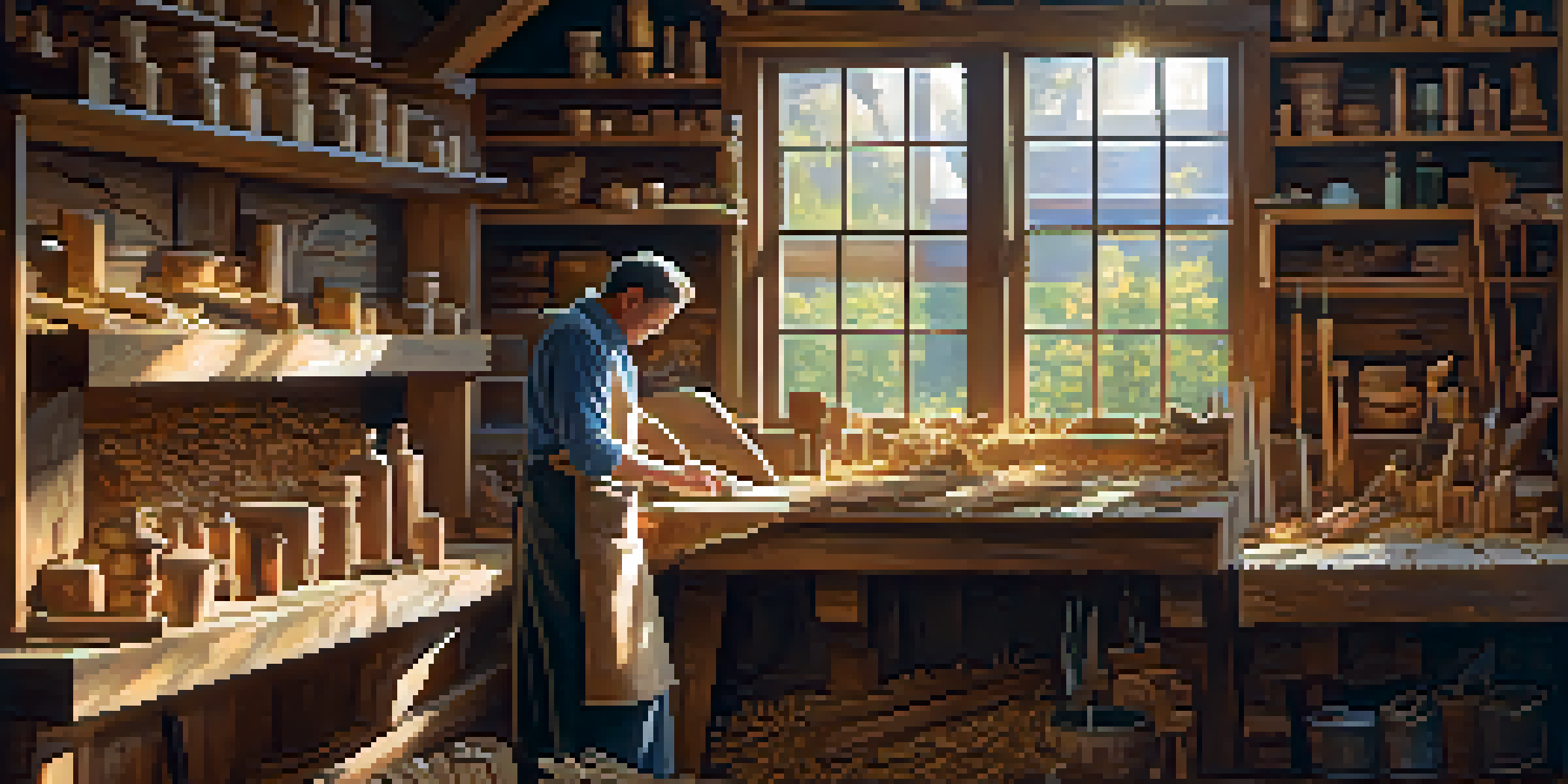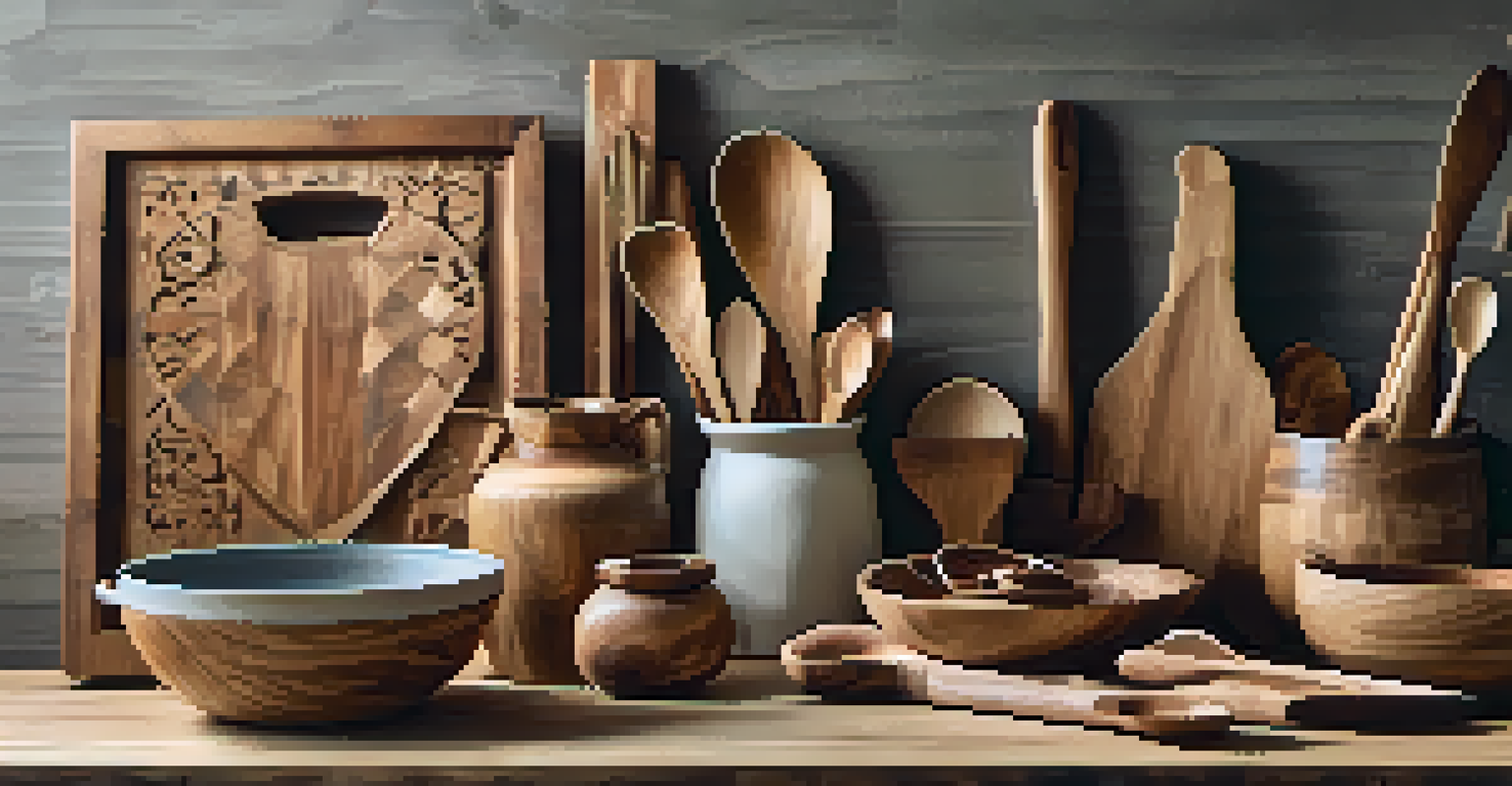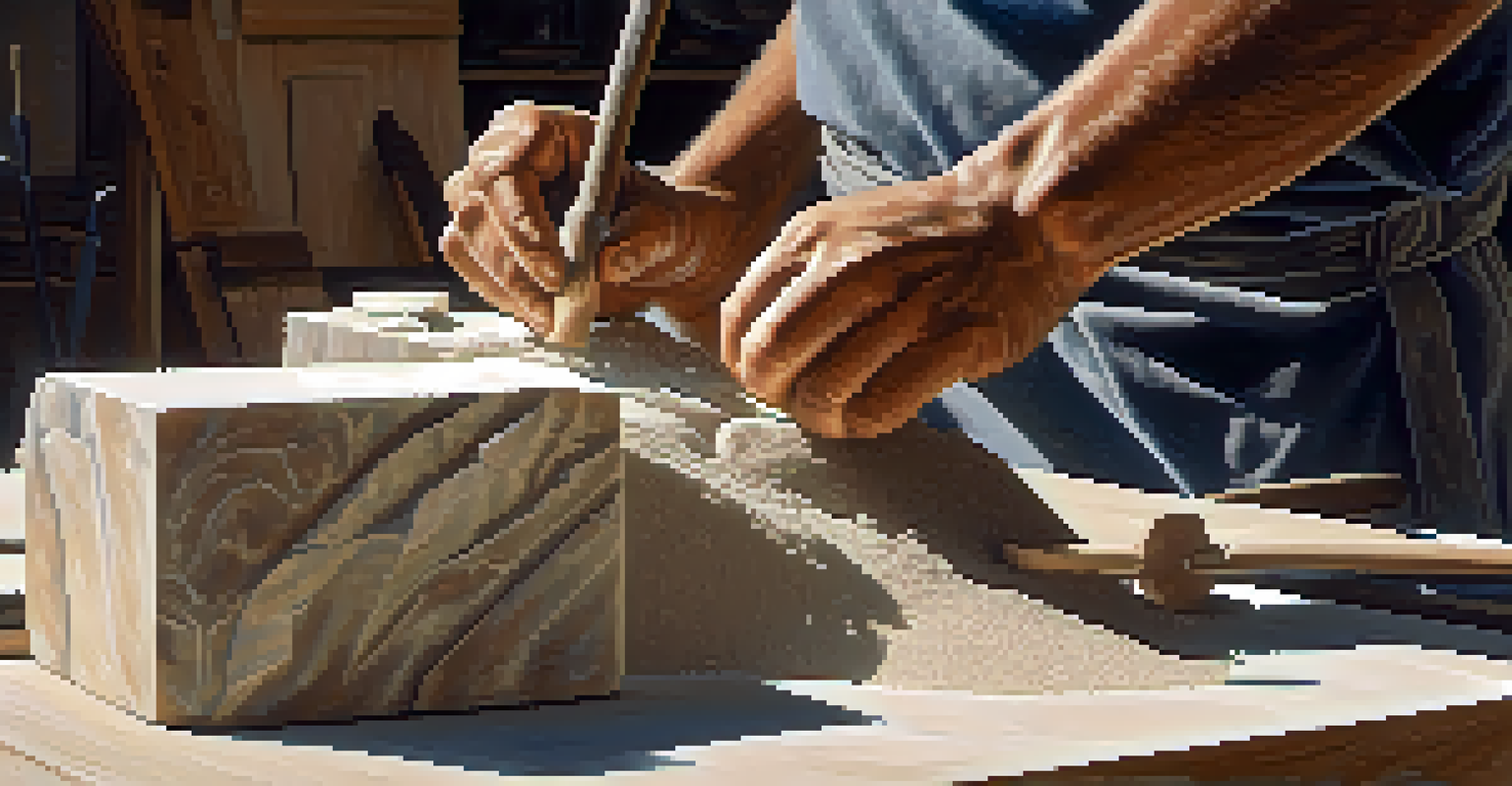Understanding the Carving Market Trends and Demands

Overview of the Carving Market Landscape
The carving market has seen a resurgence in recent years, driven by both hobbyists and professional artisans. As consumers seek personalized and unique items, the demand for hand-carved products has grown significantly. This trend reflects a broader shift towards valuing craftsmanship and individuality in a world dominated by mass production.
Craftsmanship is the art of making something with care, skill, and dedication, which is why handcrafted items always hold a special place in our hearts.
Carving encompasses a variety of materials, including wood, stone, and even food items like fruits and vegetables. Each medium has its own set of techniques and tools, appealing to different skill levels and interests. This diversity allows for a wide range of products, from decorative pieces to functional items, catering to various consumer preferences.
Understanding the market landscape is essential for both new and established carvers. By recognizing key trends, such as sustainability and the preference for local craftsmanship, artisans can position themselves effectively to meet the evolving demands of their audience.
Key Trends Influencing Carving Demand
One of the most significant trends in the carving market is the growing interest in sustainable and ethically sourced materials. Consumers are increasingly conscious of the environmental impact of their purchases, leading to a rise in demand for products made from reclaimed wood or responsibly sourced stone. This shift not only promotes eco-friendly practices but also adds a unique story to each piece.

Additionally, the rise of social media platforms has created a vibrant community for carvers and enthusiasts alike. Artists can now showcase their work to a global audience, gaining inspiration and feedback in real-time. This connectivity fosters collaboration and innovation, as carvers experiment with new techniques and styles based on trends they observe online.
Sustainability Drives Carving Demand
Increasing consumer awareness of environmental impact is boosting the demand for sustainably sourced carving materials.
Moreover, customization has become a powerful driver in the carving market. Consumers are looking for items that reflect their personal tastes or commemorate special occasions. This demand for personalized products encourages carvers to offer bespoke services, further enhancing the emotional value of their work.
Consumer Preferences in Carved Products
When it comes to consumer preferences, aesthetics play a pivotal role in the carving market. Buyers often seek pieces that not only serve a functional purpose but also enhance their home décor. Unique designs, intricate details, and craftsmanship are key factors that influence purchasing decisions, making it essential for carvers to hone their artistic skills.
In a world of mass production, the uniqueness of handcrafted art speaks volumes about the value of individuality and sustainability.
Functionality is another critical aspect that consumers consider. Many buyers are drawn to carved items that offer practicality alongside beauty, such as kitchen utensils, furniture, or decorative storage solutions. This dual appeal can significantly increase the marketability of carved products.
Lastly, the story behind the product can resonate deeply with consumers. Items that come with a narrative—whether it's about the artist's journey or the history of the materials—tend to attract more interest. Carvers who effectively communicate the story behind their creations can foster a deeper connection with their audience.
Challenges Facing the Carving Industry
While the carving market is thriving, it also faces several challenges that artisans must navigate. One prominent issue is the competition from mass-produced items, which can often be sold at lower prices. Carvers need to emphasize the value of craftsmanship and the uniqueness of their products to stand out in a crowded marketplace.
Another challenge is the availability of quality materials. As demand for sustainable products grows, sourcing ethically harvested wood or stone can become more difficult. Carvers must establish reliable supply chains while remaining committed to eco-friendly practices, which can add complexity to their operations.
Customization Enhances Emotional Value
Consumers are seeking personalized carved products that reflect their tastes and commemorate special occasions.
Additionally, the skills required for carving can take years to develop. New entrants to the market may find it daunting to master the techniques needed to create high-quality products. As a result, mentorship and educational resources become crucial for fostering the next generation of carvers.
The Role of Technology in Carving
Technology is playing an increasingly important role in the carving market, transforming traditional techniques and methods. From digital design software to CNC (Computer Numerical Control) machines, technology allows artisans to create intricate designs with precision and efficiency. This integration can enhance productivity while maintaining the unique touch that defines handcrafted pieces.
Moreover, online marketplaces and social media platforms have revolutionized how carvers connect with customers. Artisans can now reach a broader audience and sell their creations directly to consumers without relying on traditional retail channels. This direct-to-consumer model empowers carvers and allows them to retain a larger share of their profits.
However, it's essential for carvers to strike a balance between technology and traditional craftsmanship. While tools like CNC machines can enhance efficiency, the human touch remains irreplaceable in creating truly unique and personalized pieces. Carvers must find ways to incorporate technology while preserving the artistry that sets their work apart.
Sustainability in the Carving Market
Sustainability has emerged as a core value in the carving market, influencing both consumer preferences and production practices. Carvers are increasingly seeking out sustainable materials that minimize environmental impact, such as reclaimed wood or eco-friendly finishes. This commitment to sustainability not only appeals to environmentally conscious consumers but also contributes to a healthier planet.
Additionally, many artisans are adopting sustainable practices in their overall business operations. This can include using energy-efficient tools, reducing waste, and implementing recycling programs. By showcasing these efforts, carvers can differentiate themselves in a competitive market and build a loyal customer base that shares their values.
Technology Shapes Carving Practices
The integration of technology, like CNC machines, is transforming traditional carving methods while still emphasizing the importance of craftsmanship.
Ultimately, sustainability in the carving market is about creating a positive impact while delivering high-quality products. Consumers are more likely to support artisans who prioritize eco-friendly practices, making sustainability not only a trend but a vital aspect of long-term success in the industry.
Future Outlook for the Carving Market
As we look to the future, the carving market appears poised for continued growth and evolution. With the increasing demand for unique, handcrafted products, artisans have a wealth of opportunities to explore. By staying attuned to consumer preferences and market trends, carvers can adapt and thrive in this dynamic landscape.
Emerging technologies will likely continue to shape the carving industry, allowing artisans to innovate while preserving traditional techniques. The blending of old and new will enable carvers to create products that resonate with modern consumers while honoring the rich history of craftsmanship.

Ultimately, the future of the carving market hinges on the ability of artisans to connect with their audience. By fostering relationships and sharing their stories, carvers can build a loyal following that appreciates the artistry and passion behind each piece, ensuring the longevity of their craft in an ever-changing world.